Flying in the sky | Listening to astronauts telling hard-core stories behind "holding hands" in space
CCTV News:The rendezvous and docking of the Mengtian experimental module and the space station assembly can be said to be the space "handshake" of the two spacecraft with the largest mass in China’s manned spaceflight project, and the control difficulty is obviously increased. To this end, researchers have also come up with many ways to enable them to "shake hands" steadily in space.
This time, the Mengtian experimental module will rendezvous and dock with the space station assembly, which can be said to be the most "powerful" space handshake in China’s space history. The Mengtian experimental module weighs 23 tons, while the space station is a "four-module" combination consisting of Tianhe core module, candlestick experimental module, Shenzhou-14 manned spacecraft and Tianzhou-4 cargo spacecraft, with a total weight of more than 60 tons. In order for these two behemoths to complete rendezvous and docking, they must "shake hands steadily" and minimize the impact force between them.
Liang Xiaofeng, overall chief designer of space station system electricity of the Fifth Academy of Aerospace Science and Technology Group:In order to overcome the impact of large impact on equipment during docking, in fact, some special designs and damping designs have been made in rendezvous and docking to adapt to large-tonnage and large-mass rendezvous and docking. In the whole docking process, the relay is slowed down or reduced to protect the whole docking mechanism and reduce the impact on the whole assembly and equipment.
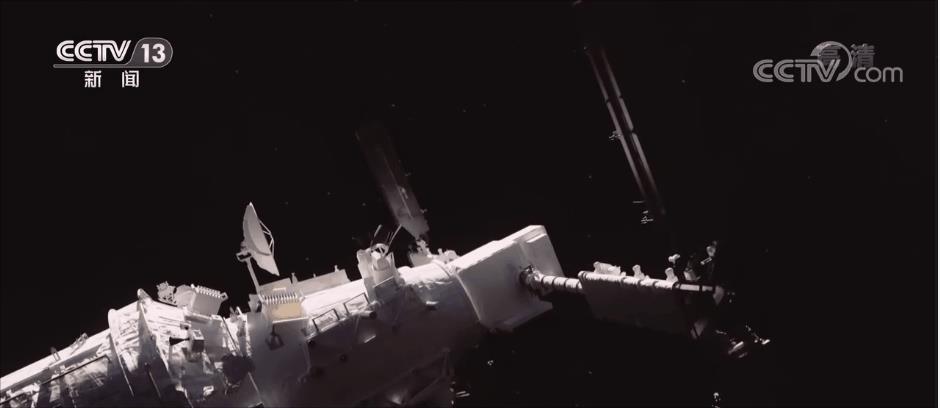
Another big test of this rendezvous and docking is that the Mengtian experimental module carries two huge solar panels, which are not only large in area, but also made of flexible materials, just like carrying a pair of huge "soft wings" for rendezvous and docking, and the control difficulty can be said to be unprecedented. To this end, researchers also designed a set of solar array deployment scheme for Mengtian experimental module, which improved the controllability and ensured the safety and success of the mission.
Chao Luo, the overall designer of the space station system of the Fifth Academy of Aerospace Science and Technology Group:When we docked, the solar wing kept shrinking and flying. After docking, we completed the second deployment of the solar wing.
Space "holding hands" is difficult, and multiple measures are taken to ensure success.
The Mengtian experimental module is similar to the candlestick experimental module launched three months ago, but the rendezvous and docking process is "difficult" and "difficult". In order to solve these problems, researchers have designed a large number of plans and measures to ensure the final success of the rendezvous and docking.
According to reports, the first difficulty of this rendezvous and docking is that after the Mengtian experimental module is in orbit, there is a big deviation from the angle of the sun, which leads to weak power generation capacity of solar panels and energy shortage. If the rendezvous and docking cannot be completed within the specified time, it is necessary to urgently adjust the posture of "Mengtian" towards the sun to replenish energy, which will lead to the delay of rendezvous and docking time. To this end, researchers have specially formulated a failure plan for the rendezvous and docking mission for "Mengtian".
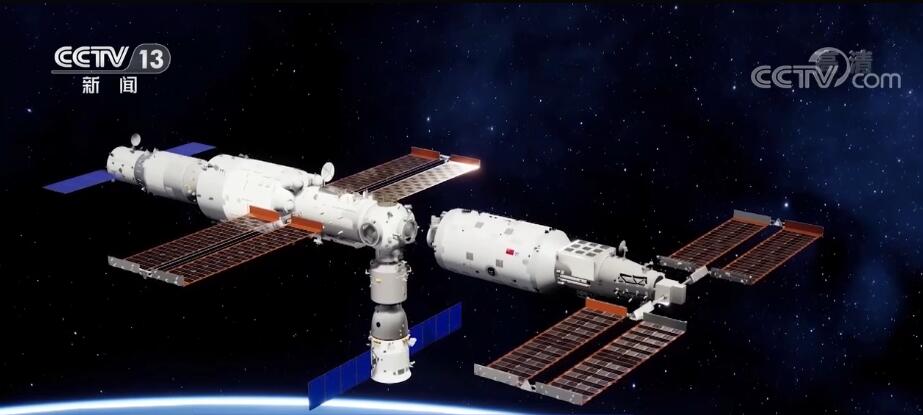
The second difficulty lies in the goal of this rendezvous and docking — — On the space station assembly. In the last rendezvous and docking, the combination was in a symmetrical configuration, but in this rendezvous and docking, the combination was in an L-shaped asymmetrical configuration, which significantly increased the difficulty of the on-orbit attitude control of the space station.
Chao Luo, the overall designer of the space station system of the Fifth Academy of Aerospace Science and Technology Group:Pitch offset is adopted at a certain angle, which can save a lot of propellant and effectively use space torque. Then, when the Mengtian module enters the final translation and convergence section, the pitch angle will be adjusted to a completely horizontal state to wait for the rendezvous and docking of the Mengtian experimental module.
In addition, when Mengtian approaches the assembly, it is necessary to start the reverse thrust engine to slow down, and the plume of the engine will interfere with the attitude of the assembly, which makes it more difficult to dock the Mengtian experimental module with the space station at the last minute. However, under the "careful design" of scientific researchers, Mengtian experimental module accurately identified the relative distance and posture with the space station assembly, and finally achieved high-precision rendezvous and docking through a little approach.
Three-type solar wing provides abundant energy for China Space Station.
After the docking and transposition of Mengtian experimental module and China Space Station, China Space Station will form a T-shaped configuration, and China Space Station will also use three different solar wings at the same time.
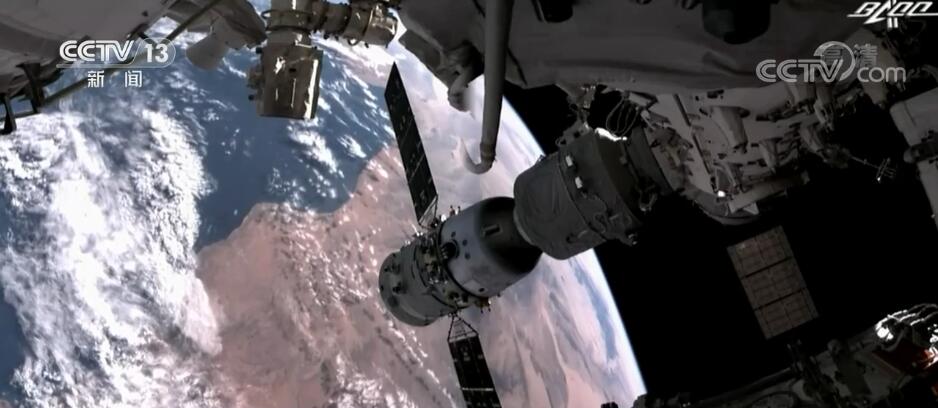
During the planning and design of China Space Station, researchers developed three generations of solar wings according to the characteristics and needs of different cabins, each with its own characteristics. Shenzhou manned spacecraft uses the first generation of rigid solar wings, and Tianzhou cargo spacecraft uses the second generation of semi-rigid solar wings.
Liu Bihai, deputy director of the power supply of the Mengtian experimental cabin of the Space Station of the Eighth Academy of China Aerospace Science and Technology Corporation:In the first generation, we used a rigid substrate, which was made of carbon fiber and aluminum honeycomb, and its volume was relatively large. On the basis of the further improvement of the original power demand, our cargo ship uses the second generation semi-rigid solar wing, which uses a carbon fiber frame and a glass fiber net, just like a tennis racket, greatly reducing the weight of the whole solar wing.
Compared with shenzhou spaceship and cargo spacecraft, the two experimental cabins of the space station are very large. At the same time, the experimental cabin also needs to carry a large number of cabinets to complete a number of on-orbit experiments, which consumes a lot of electricity. To this end, researchers have specially developed the third generation of flexible solar wings to ensure the electricity demand of the experimental cabin.

Liu Bihai, deputy director of the power supply of the Mengtian experimental cabin of the Space Station of the Eighth Academy of China Aerospace Science and Technology Corporation:At present, the solar wing used in Mengtian experimental module is our third generation solar wing, which is called flexible solar wing. It has the characteristics of light weight, long life and high power. The power generation capacity of two solar wings in a single cabin is about 18 kilowatts. Generally speaking, the power generation capacity of my single experimental cabin in a dream day can be used by a family of three for three months.
After the combination of Tianhe, Zhentian and Mengtian, the daily power generation of the space station can reach nearly 1000 degrees, making the Chinese space station truly "worry-free".
A new generation of solar wings empowers "dream days"
A new generation of flexible solar panels adds new impetus to China Space Station. What is this flexible solar panel like? What are the characteristics? Follow the reporter from the reception desk to have a look.
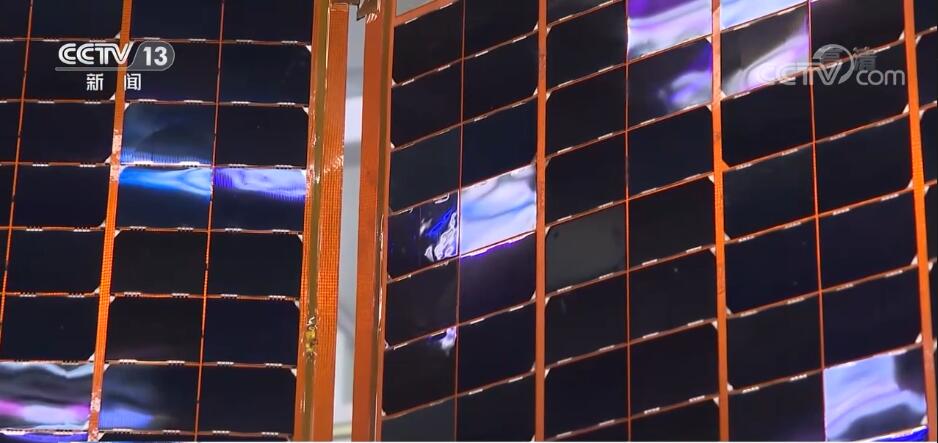
General Station reporter Chen Qingbin:The electric energy converted from solar energy is the energy source of spacecraft in orbit. What is different from ordinary spacecraft is that on the Mengtian test module launched this time, it is such a pair of "soft wings" behind me — — Flexible solar panels. As you can see, the veneer of this solar panel is less than 1 mm thick, which can be described as "as thin as paper", and there are many small mirrors with dark blue glass on it. Each small mirror is like a small space power station, which is connected in series and in parallel to form a solar cell array to provide a continuous energy guarantee for the spacecraft.
The solar panels of Mengtian experimental module adopt the latest generation of solar array technology in China — — The flexible triple junction gallium arsenide solar cell array is composed of hundreds of thousands of flexible solar cells. The weight per unit area of these flexible solar cells is only 50% of that of traditional solar cells, but the photoelectric conversion efficiency has been greatly increased.
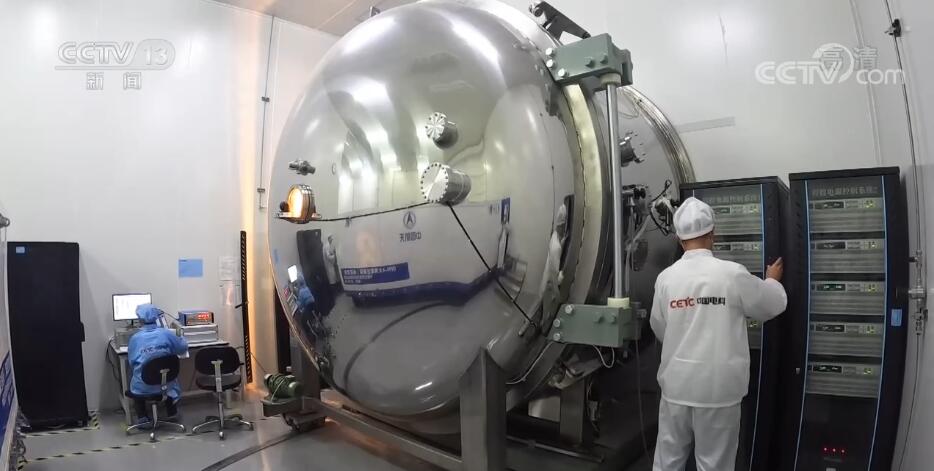
Su Bin, Head of Solar Array Project of Space Station of CLP Energy Co., Ltd.:The conversion efficiency of triple junction gallium arsenide solar cells is more than twice as high as that of traditional ground silicon cells.
In order to ensure the on-orbit life of the space station, the research team continued to develop high-voltage flexible solar array technology, and completed more than 80,000 high-and low-temperature cycle tests to ensure the structural stability and flexibility of the solar array. It is expected that the design life of the low-orbit solar array will be improved from 5 years to 15 years.